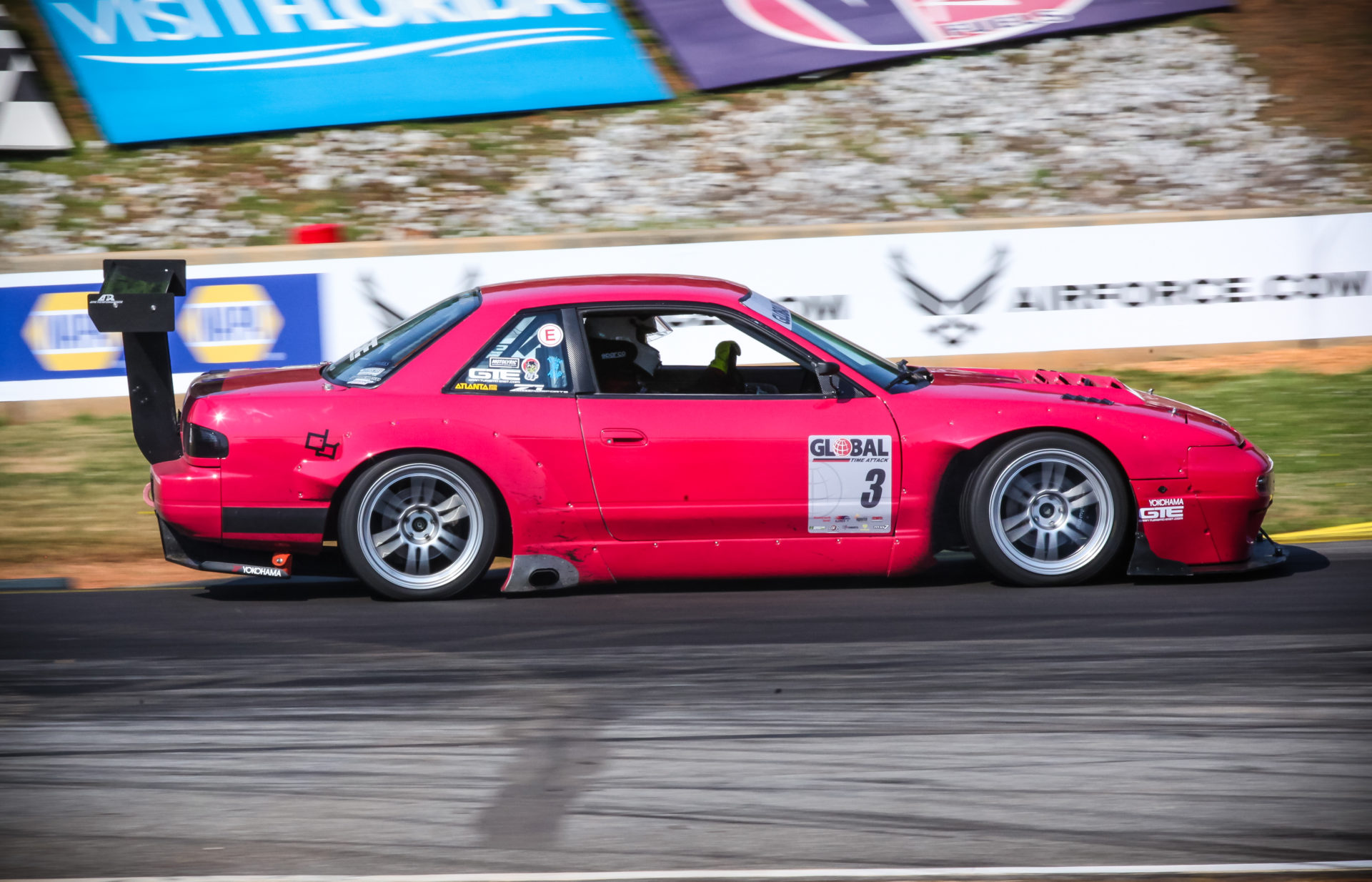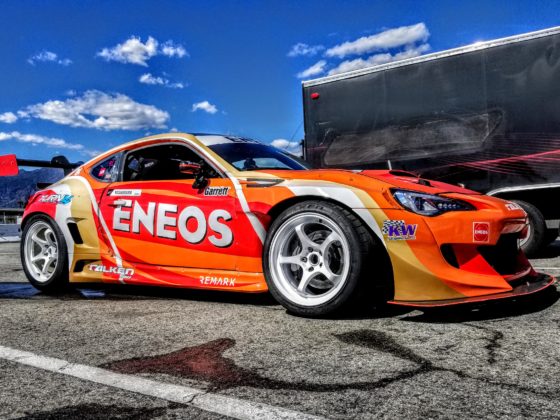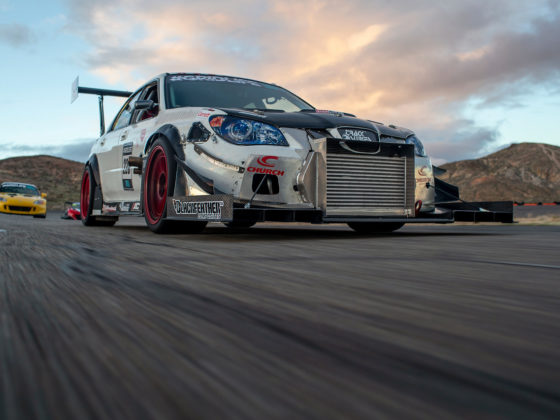
While things like LS1Edit and HPTuners exist for adjusting the factory ECU parameters, Erin chose to swap out the factory unit in favor of this aftermarket ECU from Holley. The Holley EFI system provides better control and visibility via logging than the OEM ECU could offer.
So, what does this engine and control package end up producing? How does 649 wheel horsepower sound? Except that that figure is somewhat nonsensical. Due to a clutch issue that was undetected at dyno time, it’s likely that the horsepower figure was much higher. Data from a later event after the clutch issue was sorted, but where the wastegate internally failed, suggested an over-boosted figure in the 800+ range. The car hit 180MPH on the back straight at Road Atlanta.
Since we’re already inside the cockpit, let’s look around.

Sanford’s shadetree mechanic/fabricator skills were again put to task to solve this problem. In the S13 chassis, which was designed in Japan and primarily for the Japanese market, the catalytic converter is situated directly beneath the left-hand-drive driver’s seat. While not a problem in stock form, for racing use it does tend to limit how low the driver’s seat can go. Erin cut the catalytic converter hump out of the floor and welded new floor and new seat mounting in for the Sparco Circuit II race seat.
You can also see more of Erin’s handy work on the NASCAR-style door bars.

After a bit of modification to the floor in the driver’s footwell, a set of Tilton 600-series floor-mount pedals were placed. Erin followed that with his own fabricated pivot and floor mount to convert the throttle pedal to match the Tilton rig. That Tilton rig includes an adjustable balance bar and a remote adjuster so that forward-aft brake bias (balance, really) can be easily adjusted from the driver’s seat. The Tilton 600 pedal set is also a complete manual brake setup, so there is no longer a brake booster on the firewall, resulting in further weight savings.

The dash allows for both displaying what’s going on as well as tuning/adjusting ECU parameters. Erin also went all out on sueding the dash to get rid of any possibility of glare. The Tilton pedal reservoirs were remotely mounted in the center of the factory dash so that the fluid levels are instantly visible.
In an effort to save weight, Erin cut all unnecessary weight from the factory column which included eliminating the OEM Nissan tilt assembly. The cage has a crossbar behind the dash, and so the factory dash bar was eliminated. The two tubes coming down from the cage cross bar behind the dash have bosses for bolts to hold the cut up factory column in place and the other end of the column is held up by a portion of the factory column that bolts directly to the firewall. Finally, the OEM steering column itself was modified and re-hung on the new mounts you see here.




6 comments
Nice to see some DefSport parts being used in anger. Cool build.
BTW – did you ever get the Astra power steering pump to quiet down? Based on my recent MR2 experience, I think maybe using Redline D4 ATF in it could have been the cause for the loud pump. It seems they like this special thicker hydraulic fluid blend (Pentosin makes one).
I found that mounting the pump a little higher in the car helps believe it or not.
It’s not all that loud, I couldn’t hear it over all of the other noise the car makes. I just sounds like a small turbine engine on startup then turns into an electric forklift noise after it settles in.
I never found it to be all that loud, especially compared to all the other noise the car makes. It sort of resembles a jet turbine starting up 😂
Mike – it’s mounted up about as high as it can be in the trunk of an S13. The SW20 MR2 installation has it down in the frunk just above the steering rack – but it has a big rubber condom over it to help muffle noise.
I probably wouldn’t have minded it on the track, but for a sometimes street driven car it seemed annoying to me. Then again, I had a hatch S13 so maybe it was a bit more open.
Any chance of seeing how the wastegate flow was prioritized? This is the 2nd recent MotoIQ car-ticle with a similar size turbo and gate. I feel I am running a near identical setup to this particular car though and similarly put extra effort into making wastegate flow entry a relatively shallow angle from my exhaust flow path. Truck manifolds, v banded, near equal length 2.25 inch up pipes, merge into 3″ before tapering down to undivided T4 flange. I have a precision gen 2 7675 CEA .96 a/r with full 3.5″ turbo back exhaust. This is on a 5.3 with ~10:1 compression and timing backed off for tuning, 12* base timing. I’m having trouble with boost creep with a precision turbo 46mm wastegate dumping to atmo. I have a 3psi spring in it and in full throttle 4th gear pulls from 40-100ish it can hold boost steady at 3.5 psi up to 5500rpm, on the way past that to my ‘safe for tuning’ limiter of 6000rpm it loses control and boost spikes to ~8psi, it will likely be even worse with a proper redline. I was contemplating going to a PW66.